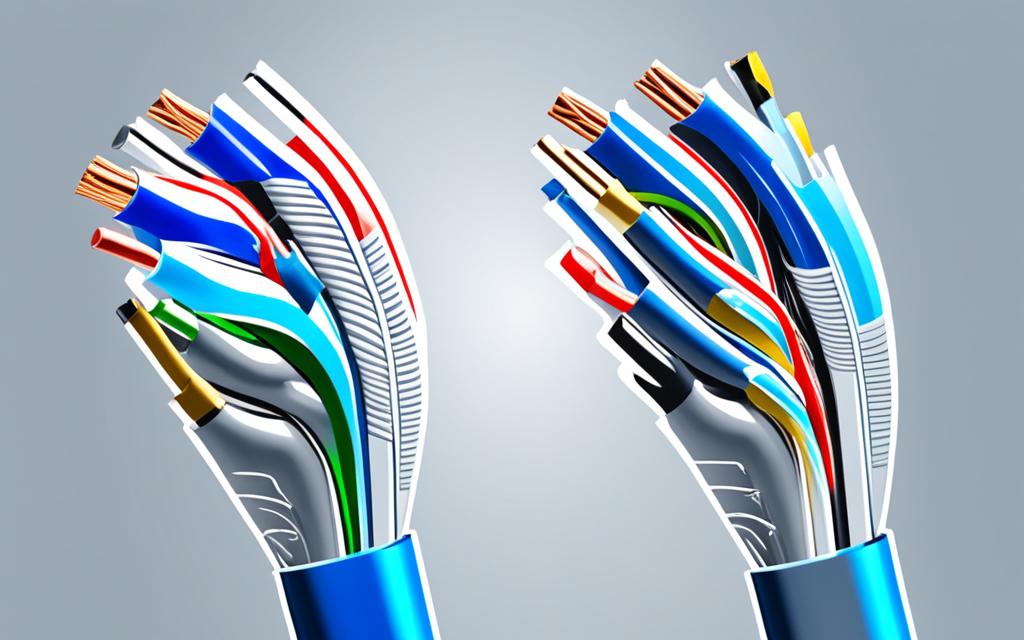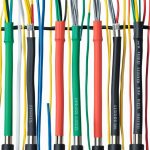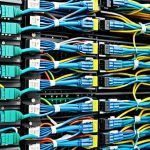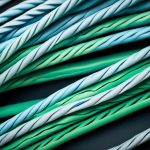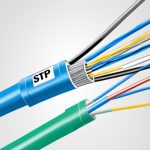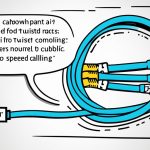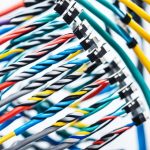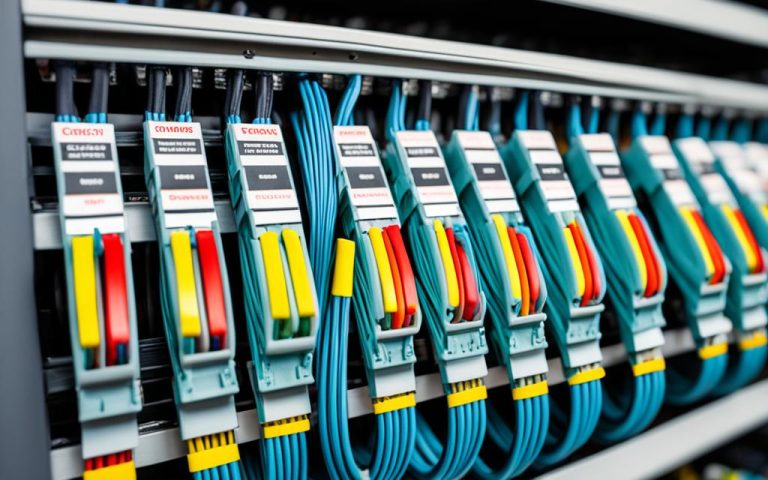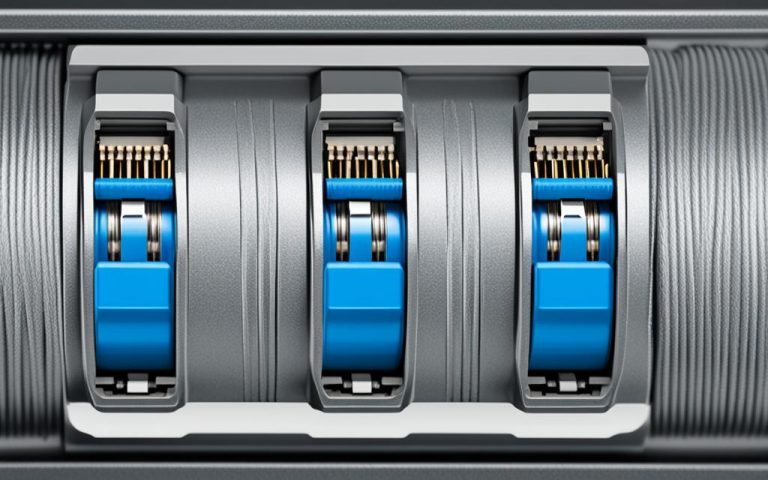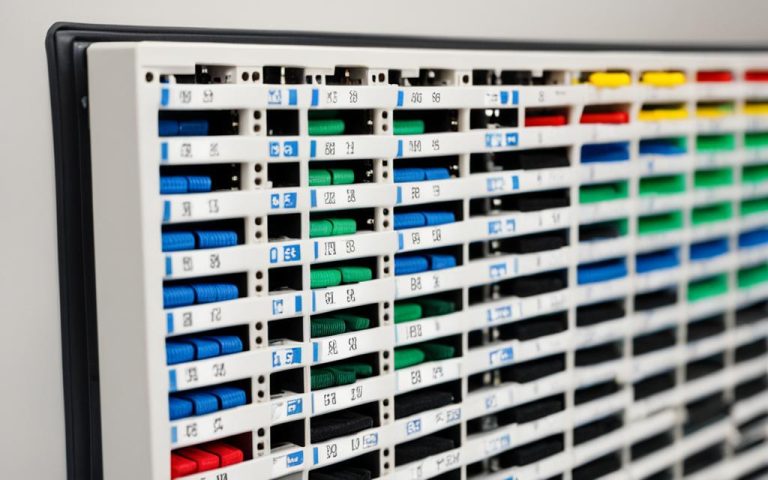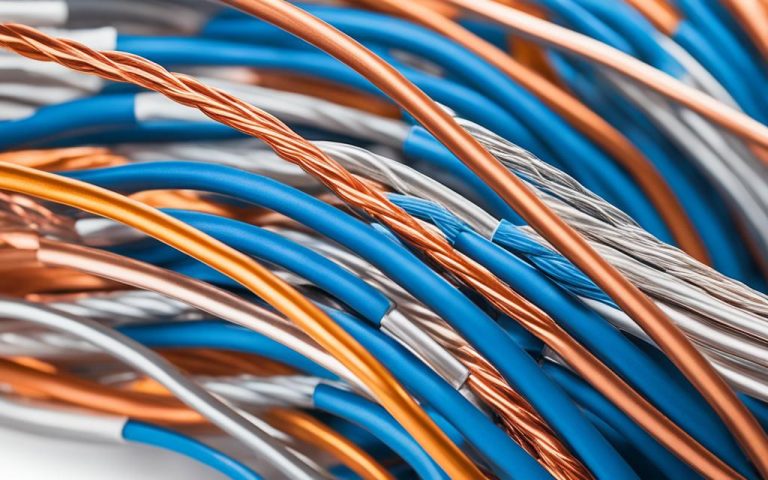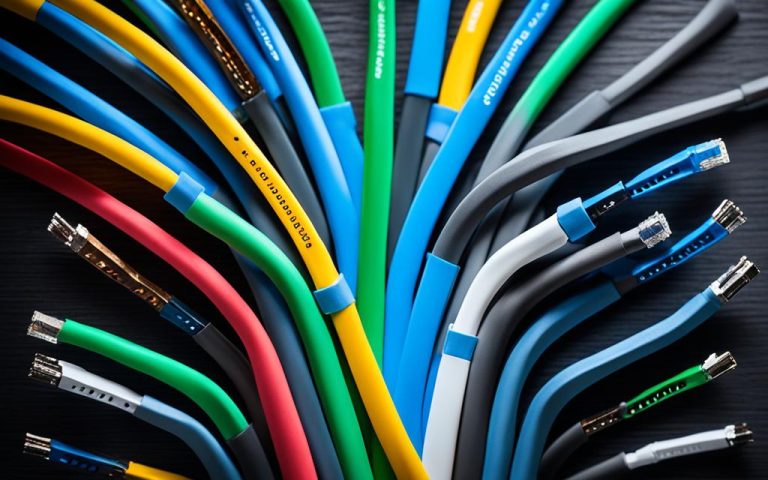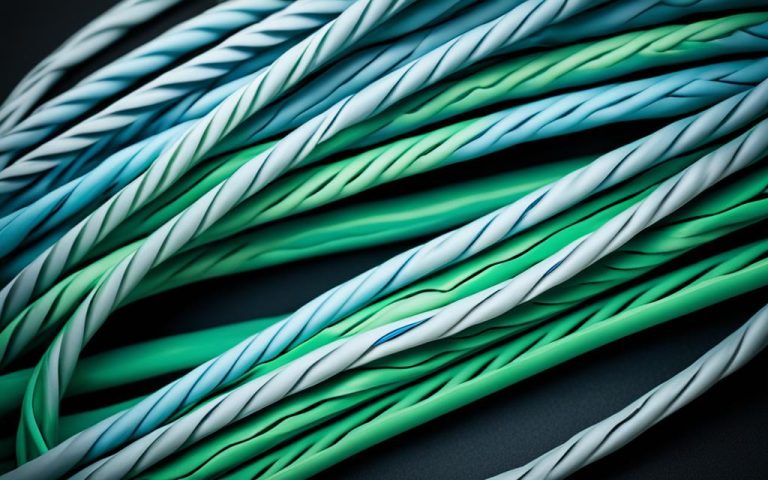Shielded Cat6 Ethernet Cables are an essential component for maintaining network integrity and ensuring reliable and efficient connectivity. These cables offer a range of benefits, including enhanced signal integrity, high-speed performance, and durability. By implementing proper cable shielding techniques, such as using twisted pair cables and shielding, electromagnetic interference (EMI) can be minimized, resulting in a more stable and reliable network.
Investing in Shielded Cat6 Ethernet Cables is a proactive step towards optimizing network performance. These cables reduce EMI, which can cause disruptions in the network and affect overall performance. With speeds of up to 10 Gbps and backward compatibility with previous cable systems, they provide a robust and future-proof solution for network connectivity.
Proper cable shielding plays a vital role in maintaining network integrity. It protects cables from EMI generated by other components in the system, ensuring proper functioning of drives and motors. Additionally, proper grounding of the shielding is crucial to prevent vulnerabilities and ensure signal integrity.
By following best practices, performing regular inspections, and addressing any issues promptly, the performance of shielded networks can be maximized, resulting in a reliable, fast, and efficient network connection.
The Importance of Shielding in Cable Systems
Shielding in cable systems plays a critical role in minimizing electromagnetic interference (EMI) and ensuring network stability. EMI can lead to unintended motion and drive faults, causing disruptions in the network. By implementing effective shielding techniques, cables are protected from EMI generated by other components in the motion system, enabling the proper functioning of drives and motors.
Shielded cables, such as those with twisted pairs and shielding, are designed to reduce the risk of signal-to-noise ratio interference, resulting in a more stable and reliable network. These cables provide an additional layer of protection against external electromagnetic interference, preserving the integrity of data transmission and enhancing overall network performance.
With proper shielding, cable systems can mitigate the negative effects of EMI, safeguarding against data corruption, signal degradation, and network downtime. By investing in high-quality shielded cables and deploying them strategically throughout the network infrastructure, organizations can optimize network reliability and maintain a seamless flow of communication.
“Proper shielding is not only about preventing external interference, but also about ensuring the integrity of data transmission within the cable system.”
To further illustrate the importance of shielding in cable systems, consider the following scenario:
| Scenario | Impact of Shielding |
|---|---|
| An unshielded cable system is exposed to electromagnetic interference generated by nearby power cables. |
|
| A shielded cable system with proper grounding and shielding techniques is employed. |
|
By understanding the importance of shielding in cable systems and implementing appropriate measures, organizations can eliminate or minimize the detrimental effects of electromagnetic interference, resulting in a more robust and reliable network infrastructure.
Proper Grounding for Cable Shielding
Proper grounding plays a critical role in ensuring effective cable shielding and minimizing electromagnetic interference (EMI) noise. Without adequate grounding, the cable shield becomes susceptible to external noise, compromising signal integrity and overall network performance.
To prevent EMI noise and maintain optimal cable shielding, it is essential to bond and ground the cable shield at both ends. This grounding process creates a low-impedance path to ground, allowing for the diversion of unwanted electrical currents and minimizing the risk of EMI-induced disruptions in the network.
One key aspect of proper grounding is ensuring that the grounding plate is correctly connected to the drive and adequately grounded. This connection establishes a robust and reliable grounding point for the cable shield, reducing vulnerabilities and enhancing its effectiveness in shielding against external noise.
Lack of sufficient grounding can result in the EMI signal radiating and propagating throughout the network, leading to interference and compromised network performance. By establishing proper grounding, the risk of EMI noise is significantly reduced, resulting in a more stable and reliable network connection.
Remember that grounding is an essential component of an effective cable shielding system. It protects against EMI noise, ensures signal integrity, and guarantees the optimal performance of the network.
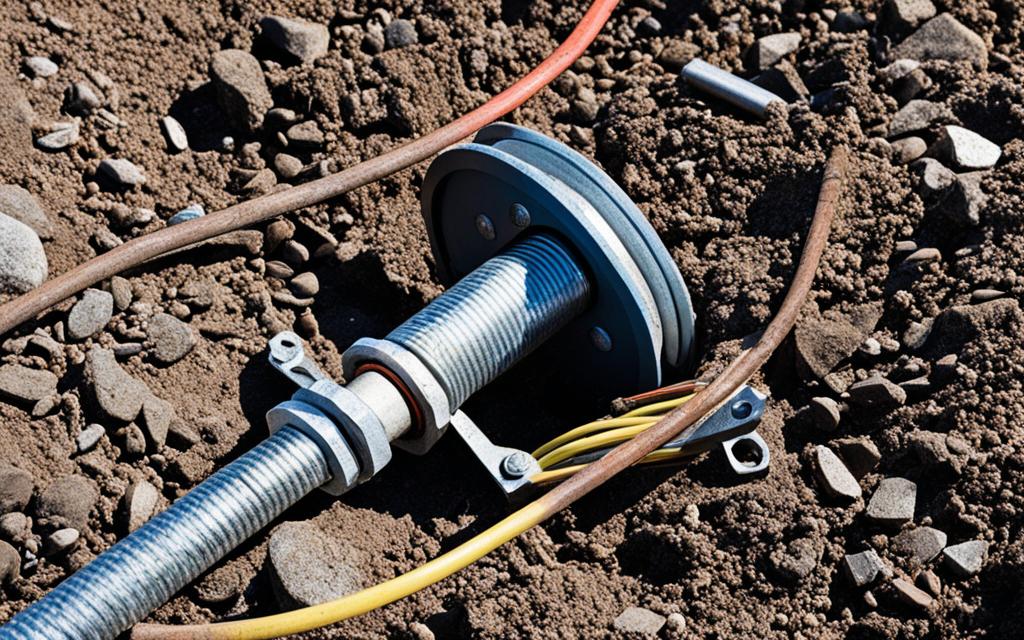
Comparison of Grounding Types
| Grounding Type | Advantages | Disadvantages |
|---|---|---|
| Single-Point Grounding |
|
|
| Multiple-Point Grounding |
|
|
Bonding and Grounding in Shielded Cabling Links
In shielded cabling links, proper bonding and grounding are crucial to maintaining network integrity. The shielded cabling link at the workstation must be securely bonded to the grounding system to ensure stability and reliability. However, it is important to avoid creating ground loops that can disrupt the network. To achieve this, all serving AC power systems should be bonded together to the same grounding electrode system.
This bonding technique minimizes ground voltage differences, reducing the risk of ground loop currents. By ensuring that the AC ground and telecommunications ground are at the same potential, the potential for network disruptions is significantly reduced.
| Bonding and Grounding Benefits | Key Points |
|---|---|
| Reduces ground voltage differences | Minimizes ground loop currents |
| Ensures AC ground and telecommunications ground are at the same potential | Reduces potential for network disruptions |
Proper bonding and grounding in shielded cabling links provide a solid foundation for network performance. By implementing these practices, network administrators can ensure the integrity and reliability of their network connections.
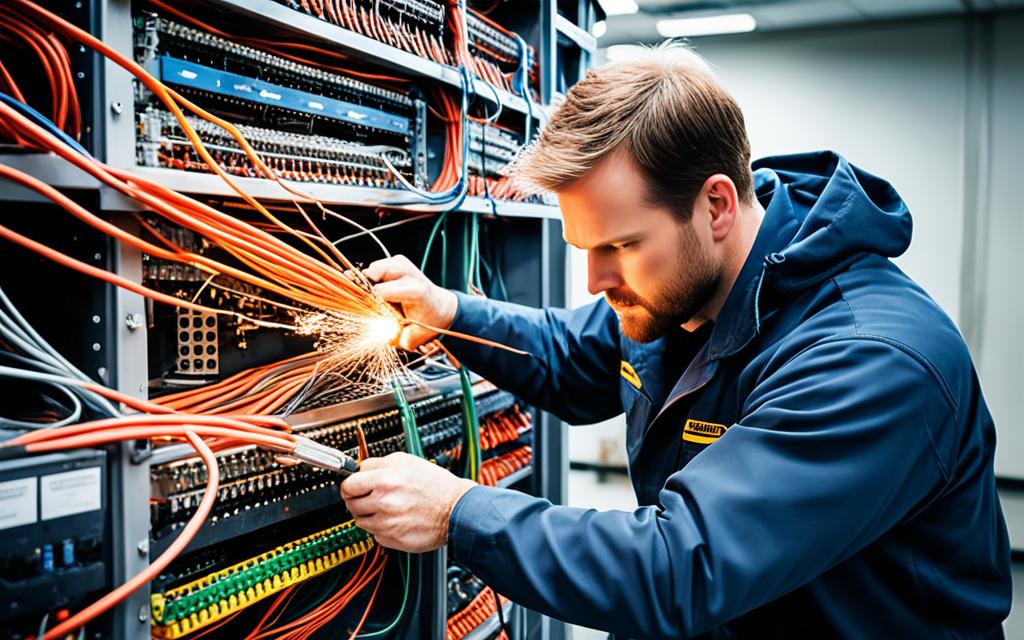
Ensuring Path Continuity for Shielded Networks
To optimize the performance of shielded networks, it is crucial to ensure path continuity. This involves conducting visual inspections during installation and regularly thereafter to detect any potential issues. Some of the common problems that can be identified through visual inspections include:
- Loosened or corroded connections
- Damage to the conductors
- Missing labels
By identifying and addressing these issues early on, the integrity and reliability of the network can be maintained.
In addition to visual inspections, it is essential to inspect the overall design of the power and ground system. This ensures that proper bonding and grounding are in place, further enhancing the performance of shielded networks.
Following best practices and maintaining path continuity are key to optimizing the performance of shielded networks. It is essential to prioritize regular inspections and adhere to industry standards to ensure a robust and efficient network infrastructure.
| Issue | Solution |
|---|---|
| Loosened or corroded connections | Tighten or replace connectors |
| Damage to the conductors | Repair or replace damaged sections |
| Missing labels | Properly label all connections for easy identification |
Testing and Troubleshooting at the Workstation
Once the data center bonding and grounding system has been inspected, it’s crucial to shift focus to the workstation area closest to the end user. Potential differences between the data center and the workstation can result in ground loops and current flow, leading to network disruptions. Conducting thorough testing and troubleshooting at the workstation is essential for identifying and resolving any issues that may compromise network integrity.
Visual verification plays a key role in ensuring proper bonding and grounding at the workstation. Inspect connectors, busbars, and conductors for any signs of damage or loose connections. A visual inspection can reveal potential vulnerabilities in the network connection and help prevent future problems.
“Proper testing and troubleshooting at the workstation can identify and resolve any issues.”
By conducting tests and troubleshooting procedures at the workstation, network professionals can proactively address any potential faults or vulnerabilities in the network connection. These steps contribute to maintaining the integrity of the network and ensuring a stable and reliable connection for end users.
To streamline the testing process, consider utilizing specialized testing equipment designed for troubleshooting network connections. These tools can help pinpoint the exact location of any faults or issues, streamlining the troubleshooting process and reducing downtime.
Visual Verification Process
During the visual verification process, follow these steps to ensure optimal network performance:
- Inspect connectors: Check for any signs of physical damage, loose pins, or misalignment. Replace faulty connectors as necessary to ensure a secure and reliable connection.
- Check busbars: Ensure busbars are intact and properly connected. Look for any signs of corrosion or oxidation that may affect the conductivity of the busbars.
- Inspect conductors: Examine the condition of the conductors for any signs of damage, fraying, or loosening. Tighten connections if necessary and replace damaged conductors to maintain reliable signal transmission.
- Verify grounding: Confirm that the workstation’s grounding system is properly bonded and connected. Check for any loose or corroded ground connections that may compromise the effectiveness of the grounding system.
By following these visual verification steps, network professionals can ensure the integrity of the network connection at the workstation, minimizing the risk of disruptions and optimizing overall network performance.
Proper testing and troubleshooting at the workstation are integral steps in maintaining a reliable and efficient network connection. Through visual verification of bonding, grounding, connectors, busbars, and conductors, network professionals can identify and address any issues that may compromise network integrity.
The Role of UTP Patch Cords in Shielded Networks
In shielded networks, UTP (Unshielded Twisted Pair) patch cords play an important role in grounding the shielded cable channel at one end in the data center. This strategic use of UTP patch cords reduces the risk of ground loop currents while considering the trade-off between protection and system performance.
UTP patch cords are commonly employed in situations where eliminating voltage differences between ground potentials is not feasible. By grounding only one end of the shielded cable channel, UTP patch cords help to minimize ground loop currents, which can disrupt network performance.
However, it is important to note that using UTP patch cords lowers the level of protection against external noise. While ground loop currents are reduced, the shielded network becomes more susceptible to electromagnetic interference (EMI) from external sources.
When deciding to use UTP patch cords in your shielded network, careful consideration must be given to balancing the need for protection against the risk of ground loop currents. It is crucial to assess the specific requirements of your network and determine if the use of UTP patch cords aligns with your desired level of performance and protection.
| Advantages | Disadvantages |
|---|---|
| Reduces ground loop currents | Lower protection against external noise |
| Offers a trade-off between protection and system performance | Requires careful consideration and assessment of network requirements |
Expert Quote:
“UTP patch cords can be a useful tool in shielded networks to address ground loop current concerns. However, it is important to understand the potential trade-offs and assess the specific needs of your network before implementing this approach.”
Conclusion
The importance of proper cable shielding techniques cannot be overstated when it comes to enhancing network integrity and performance. By utilizing Shielded Cat6 Ethernet Cables, you can minimize electromagnetic interference and ensure a reliable network connection. These cables offer high-speed performance, durability, and compatibility for robust connectivity.
Grounding and bonding are vital components of effective cable shielding. Ensuring the cable shield is bonded and grounded at both ends provides protection against external noise and ensures signal integrity. Additionally, regular inspections and testing at the workstation area help identify and resolve any potential issues that may arise.
By following best practices and optimizing path continuity, you can maximize the performance of shielded networks. This involves performing visual inspections, maintaining proper bonding and grounding, and utilizing UTP patch cords when necessary. The right choice of cables, along with diligent maintenance and troubleshooting, will result in a network that delivers optimal performance and minimizes disruptions.
FAQ
What are the benefits of using Shielded Cat6 Ethernet Cables?
Shielded Cat6 Ethernet Cables offer enhanced signal integrity, high-speed performance, durability, and compatibility for robust network connectivity. They reduce electromagnetic interference, support speeds up to 10 Gbps, are durable and long-lasting, and are backward compatible with previous cable systems. Investing in these cables ensures a reliable, fast, and efficient network.
Why is shielding important in cable systems?
Shielding in cable systems is crucial to minimize electromagnetic interference (EMI). EMI can cause unintended motion and drive faults, leading to disruptions in the network. Shielding helps protect cables from EMI generated from other components in the motion system, ensuring proper functioning of drives and motors. By utilizing cables with twisted pairs and shielding, the risk of signal-to-noise ratio interference is reduced, resulting in a more stable and reliable network.
How does proper grounding contribute to effective cable shielding?
Proper grounding is essential for effective cable shielding. The cable shield must be bonded and grounded at both ends to prevent EMI noise. Grounding the shielding protects the cables against external noise and ensures signal integrity. It is important to ensure the grounding plate is properly connected to the drive and grounded to prevent vulnerabilities in the cable shield. Lack of a low-impedance path to ground can result in the EMI signal radiating and causing disruptions in the network.
Why is bonding and grounding important in shielded cabling links?
In shielded cabling links, proper bonding and grounding are necessary to maintain network integrity. The shielded cabling link at the workstation must be properly bonded to the grounding system without inducing a ground loop. Bonding all serving AC power systems together to the same grounding electrode system reduces ground voltage differences, minimizing the risk of ground loop currents. This ensures the AC ground and telecommunications ground are at the same potential, reducing the potential for disruptions in the network.
How can path continuity be ensured for shielded networks?
To optimize the performance of shielded networks, it is important to ensure path continuity. Performing visual inspections upon installation and on a regular basis allows for early detection of potential issues such as loosened or corroded connections, damaged conductors, or missing labels. The overall design of the power and ground system should be inspected to ensure proper bonding and grounding. By following best practices and maintaining path continuity, the performance of shielded networks can be optimized.
What should be done for testing and troubleshooting at the workstation?
After inspecting the data center bonding and grounding system, attention should be turned to the workstation area closest to the end user. Potential differences between the data center and workstation can result in ground loops and current flow. Proper testing and troubleshooting at the workstation can identify and resolve any issues. Visual verification of proper bonding and grounding, as well as inspections of connectors, busbars, and conductors, ensure the integrity of the network connection.
How do UTP patch cords contribute to shielded networks?
UTP patch cords can be used in shielded networks to effectively ground only one end of the shielded cable channel in the data center. This reduces the risk of ground loop currents, but also lowers the level of protection against external noise. It is commonly used when eliminating voltage differences between ground potentials is not possible. The use of UTP patch cords requires careful consideration of the trade-off between protection and system performance.
What is the role of proper cable shielding in network performance?
Proper cable shielding techniques, including the use of Shielded Cat6 Ethernet Cables, are essential for enhancing network integrity and performance. The right choice of cables, along with proper grounding and bonding, ensures minimal electromagnetic interference and a reliable network connection. Regular inspections and testing at the workstation area help identify and resolve potential issues. By following best practices and optimizing path continuity, the performance of shielded networks can be maximized.

